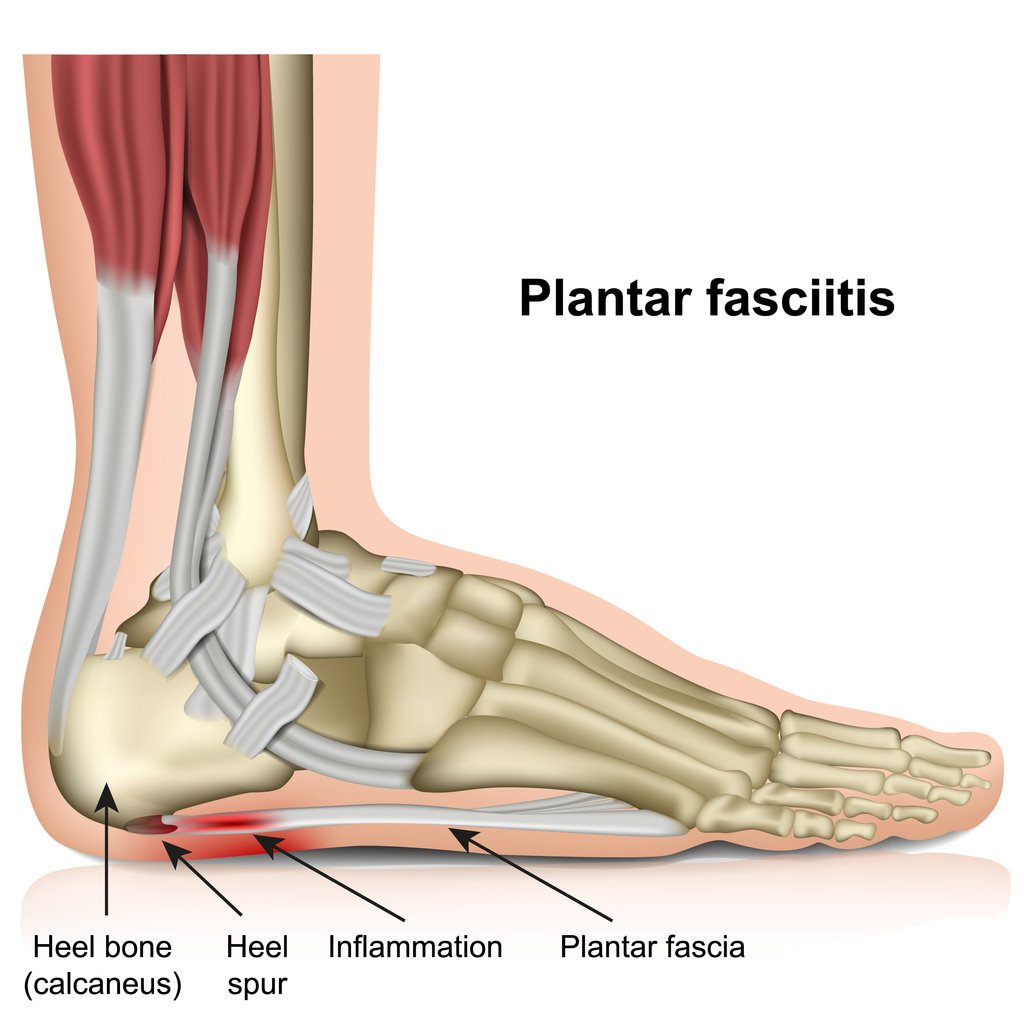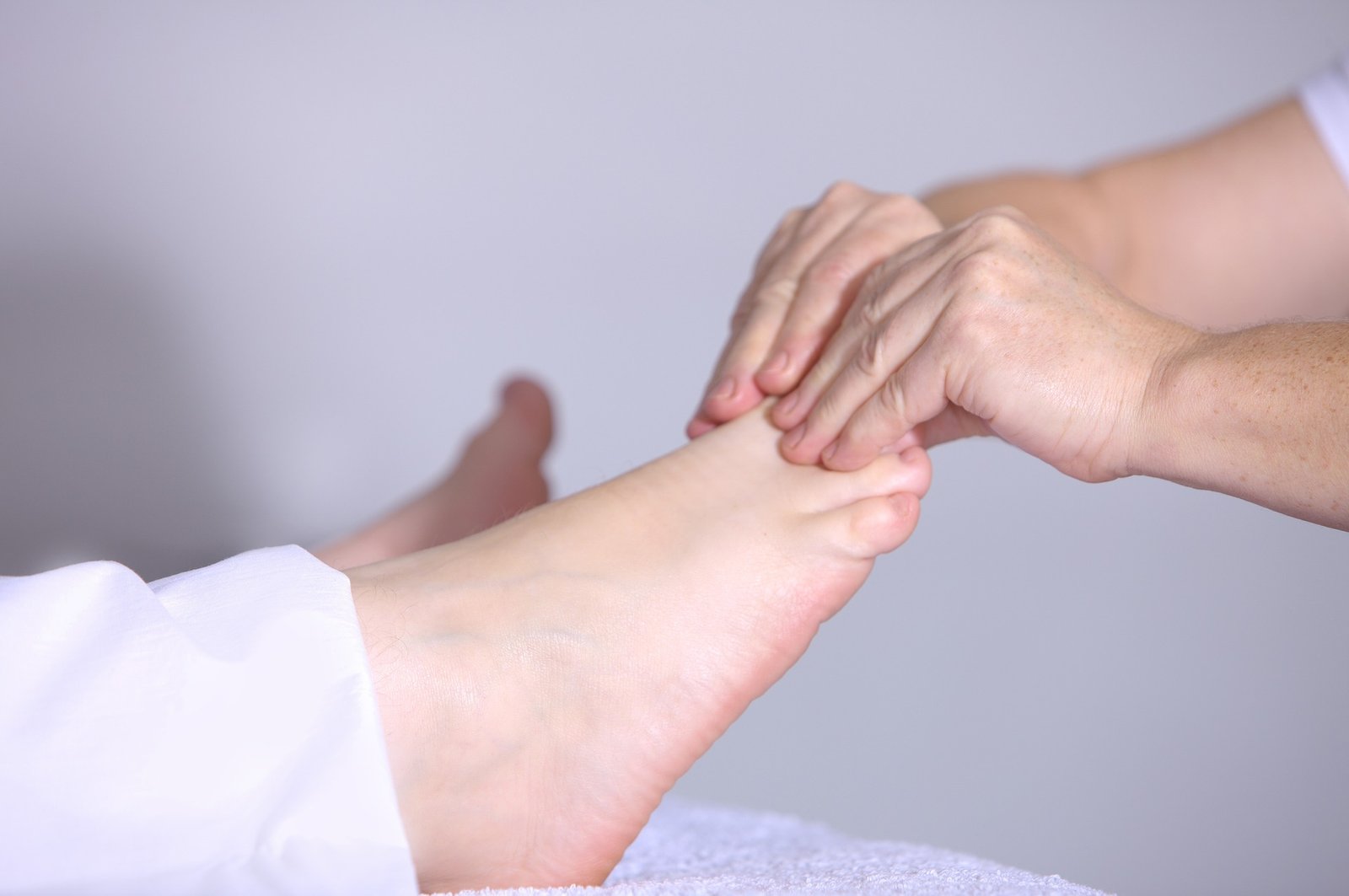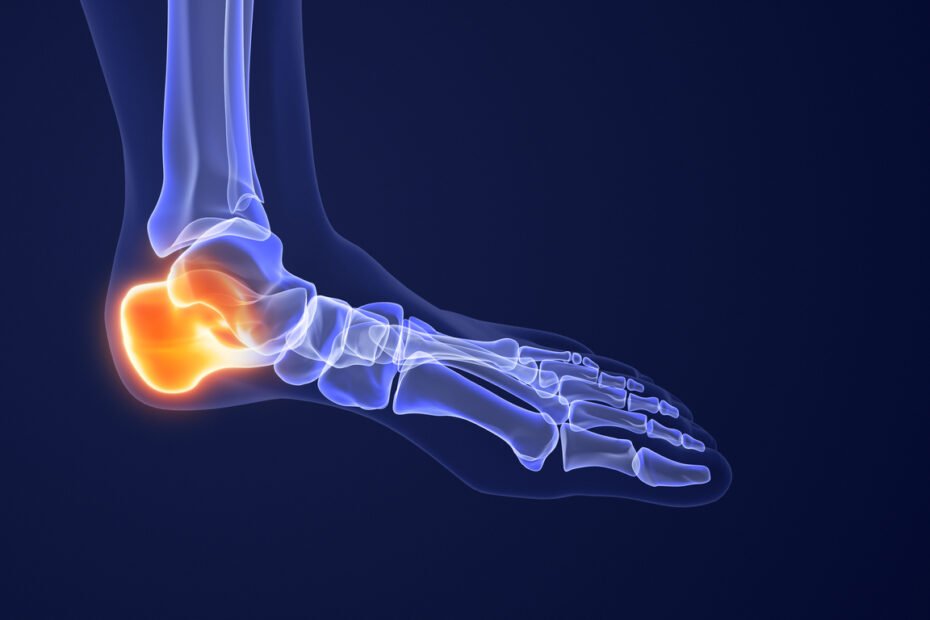If you’ve been experiencing pain in your heels that seems to be getting worse, it could be plantar fasciitis with calcaneal spur. These conditions affect the heel and can cause discomfort and difficulty walking. Understanding these conditions, their symptoms, and how they interrelate is essential in seeking appropriate treatment.
In this blog, we will provide an anatomical overview of the foot and define plantar fasciitis and calcaneal spur. We will also discuss the symptoms associated with these conditions and how they are diagnosed. You will learn about non-surgical treatment options and lifestyle changes that can help manage these conditions. With our comprehensive guide, you can take steps towards healing your heel pain and living a more comfortable life.
Understanding Plantar Fasciitis and Calcaneal Spurs
Plantar fasciitis, the leading cause of foot pain, affects the plantar fascia, while calcaneal spurs, or heel spurs, are calcium deposits leading to inflammation. Both conditions particularly impact the bottom of the foot, causing chronic pain exacerbated by much pressure and physical activity. The symptoms and treatment for these conditions vary, often manifesting as a dull ache and influencing the Achilles tendon. Landorf KB’s work on these topics is valuable in understanding their impact.
Anatomical Overview of the Foot
The foot consists of muscles, tendons, and the plantar fascia, providing arch support and shock absorption. Inflammation and pain often occur at the plantar fascia insertion and the heel bone. Stress and pressure on the foot and heel can be influenced by calf muscles, flat feet, and high arches. A calcaneal spur, or heel spur, commonly develops at the bottom of the heel bone, impacting foot health and treatment today.

Defining Plantar Fasciitis
Plantar fasciitis refers to the inflammation of the plantar fascia, leading to stabbing heel pain and discomfort, particularly in the morning. The condition often results in dull, achy sensations throughout the day. Recognizing the symptoms and underlying causes is crucial for effective treatment and support. Conservative approaches, such as physical therapy and shoe inserts, are commonly recommended by medical professionals like the American Academy of Orthopedic Surgeons and the Cleveland Clinic.
Elucidating Calcaneal Spurs
Calcaneal spurs, also known as heel spurs, are calcium deposits at the bottom of the heel bone. They often appear as bone spurs and can cause chronic pain and inflammation in the foot. Nonsurgical treatment for heel pain caused by calcaneal spurs may include cortisone injections and fascia release. In severe cases, minimally invasive treatment or open surgery may be necessary.

Symptoms Associated with Plantar Fasciitis and Calcaneal Spurs
Symptoms associated with plantar fasciitis and calcaneal spurs include heel pain, foot inflammation, and a dull ache. Tight calf muscles and extra support can alleviate these symptoms, helping to prevent the progression of pain. Ignoring the symptoms of heel spur syndrome and plantar fasciitis can worsen the condition, making early treatment essential for managing foot pain and discomfort. Recognizing and addressing these symptoms is crucial for effective treatment.
Recognizing the Symptoms of Plantar Fasciitis
The inflammation of the plantar fascia often causes heel pain. Physical activity and pressure on the foot worsen the symptoms. Conservative treatment and foot support effectively manage the pain. Plantar fascia inserts and foot muscles alleviate symptoms. It is crucial to address stabbing heel pain and risk factors promptly.
Identifying the Signs of Calcaneal Spurs
Chronic heel pain and discomfort are linked to the risk factors and symptoms of calcaneal spurs. Treatment, including cortisone injections, aims to reduce inflammation. Diagnosis and treatment involve an MRI scan and physical therapy. Common approaches include partial plantar fascia release and conservative treatment. The unique challenges presented by the heel bone and the heel spur syndrome require specific treatment and support.

How Heel Spurs and Plantar Fasciitis Interrelate
The connection between plantar fasciitis and calcaneal spurs often requires tailored treatment and podiatry care. Both conditions benefit from fascia release and physical therapy to alleviate foot pain. The bottom and back of the heel, along with the foot’s underside, are common pain points. Effective treatment necessitates comprehensive care, considering how plantar fasciitis and heel spurs can coexist and interrelate.
The Connection between Heel Spurs and Plantar Fasciitis
The release and treatment of the plantar fascia insertion provide crucial support for heel and foot health. Prompt treatment is necessary due to the overlapping symptoms and causes of heel pain, including plantar fasciitis. Specialized care and support are required for the soft tissue at the bottom of the heel affected by the heel spur syndrome. Effective treatment and prevention are essential for overall foot health.
How One Condition May Lead to the Other
When stress fractures or a broken heel occur, they may lead to heel spurs and plantar fasciitis. Additionally, symptoms and causes of heel pain, such as achilles tendinitis, can contribute to foot conditions. Valuable insights into foot health can be found in the Journal of Foot and Ankle Surgery, Weil LS, and Sports Medicine. Treatment and prevention of heel pain and foot conditions often involve the shock absorber and the foot arch.
Diagnosing the Conditions: Plantar Fasciitis and Calcaneal Spurs
Diagnostic tests aid in identifying plantar fasciitis and calcaneal spurs. Early recognition is crucial for effective treatment, as an accurate diagnosis is essential. Understanding common diagnostic exams is important, and undergoing these tests is vital in managing these conditions. Recognizing symptoms and seeking diagnostic tests are key steps in managing foot pain associated with plantar fasciitis and calcaneal spurs.

Common Diagnostic Tests for Plantar Fasciitis
Diagnostic tests, including physical examination and imaging, aid in diagnosing foot pain conditions. Medical history assessment and imaging tests such as ultrasound and MRI help identify plantar fasciitis. Gait analysis and foot pressure mapping are also common diagnostic tools. Understanding these tests is crucial for accurate diagnosis and treatment of foot conditions like plantar fasciitis and calcaneal spurs.
X-rays and Other Imaging Tests for Calcaneal Spurs
Imaging tests, including X-rays and CT scans, play a crucial role in identifying calcaneal spurs, aiding in their accurate diagnosis. These tests are essential for understanding the extent of the condition and guiding appropriate treatment. Utilizing imaging tests, such as X-rays and MRIs, is important in determining the best course of action for managing foot pain caused by calcaneal spurs.
Treating Plantar Fasciitis with Calcaneal Spur
Effective management of foot pain caused by plantar fasciitis and calcaneal spurs entails a holistic approach, encompassing diverse treatment modalities. Tailored treatment plans are essential in addressing the dull ache associated with these conditions and alleviating much pressure on the affected area. Treatment options such as Landorf KB splints and Achilles tendon stretching are vital for relieving discomfort and enhancing mobility. Understanding these strategies is crucial for comprehensive care.
Non-surgical Treatment Options for Plantar Fasciitis
Non-surgical treatment for plantar fasciitis encompasses physical therapy and orthotic devices, including orthotic inserts and shoe modifications. Rest and stretching are common conservative measures to alleviate foot pain and much pressure. Understanding the significance of non-surgical treatment options is crucial in managing this condition effectively. Incorporating these options can help relieve the dull ache associated with plantar fasciitis. Landorf KB and Achilles tendon are often involved in effective non-surgical treatments.

Alternative Treatments for Calcaneal Spurs
Complementary therapies, such as acupuncture and shockwave therapy, can enhance traditional approaches for calcaneal spurs. Herbal remedies are also often considered for their potential benefits. Understanding these alternative options is crucial for individuals seeking diverse treatment approaches. Additionally, massage and physical therapy may provide valuable support in managing calcaneal spurs. Exploring different modalities can offer additional assistance in addressing this condition.
When Surgical Intervention Becomes Necessary
In severe cases, surgical intervention may be necessary for plantar fasciitis and calcaneal spurs. It’s crucial to understand the indications for surgery and explore its role in informed decision-making. Options like plantar fasciotomy might be considered for management. Decision-making should involve thorough evaluation and consultation, ensuring informed choices for treatment.
Can Lifestyle Changes Help Manage Plantar Fasciitis and Calcaneal Spurs?
Exploring the impact of lifestyle modifications on managing plantar fasciitis and calcaneal spurs can provide valuable insights. Lifestyle adaptations, such as adjusting footwear and incorporating appropriate physical activity, may aid in their management. Understanding the role of these changes is crucial for effective treatment.

Conclusion – Plantar Fasciitis with Calcaneal Spur
In conclusion, it is crucial to understand the causes, symptoms, and interrelationship between plantar fasciitis with calcaneal spur. While non-surgical treatments and lifestyle changes can provide relief for both conditions, it is essential to consult with a healthcare professional for an accurate diagnosis and personalized treatment plan.
Remember to prioritize self-care, such as wearing appropriate footwear, stretching exercises, and maintaining a healthy weight, to manage and prevent these foot-related issues. By taking proactive steps to address plantar fasciitis and calcaneal spurs, you can alleviate pain, improve mobility, and enhance your overall quality of life. Don’t hesitate to seek medical assistance if your symptoms persist or worsen.
I hope you found this blog helpful and please feel free to comment and share.
Check out some treatment options for plantar fasciitis, which include, arch support insoles, gel sleeve, compression sleeve and physical therapy.
Thanks for reading!
 | Tracy J. Founder, The heel GP |
